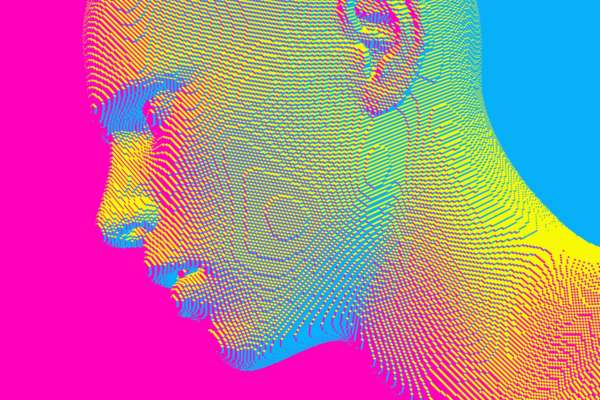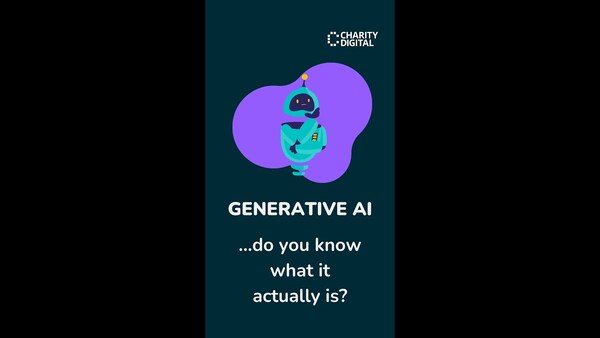Insights
INSIGHTS
All Topics
My Account
Artificial intelligence tools to help with content production
We look at options for AI content creation and the risks involved
We’re living in a content hungry world and, as ever in the non-profit sector, we’re trying to feed it with minimal resources. Artificial intelligence (AI) has the charity sector buzzing with possibility.
If AI tools could fast-track the content production process, the demands on social media and content teams, small comms teams, and sole communicators could significantly reduce.
But how realistic is it that AI could interpret a content brief and produce graphic and video content that’s on-message and on-brand?
If you’re a content producer fearing for your job, don’t panic. AI can’t do what you do, but there might be some AI tools that could help with your day to day.
Tools for image creation
Midjourney
Flicking through Midjourney’s Discord channel where AI images are created and shared is mind-blowing. But when asked to create images of humans it frustratingly defaults to older white men unless prompted otherwise.
Hotpot
Hotpot is an alternative option to consider testing. The interface for prompting the tool is within the app rather than via Discord, so for Discord newbies, it’s a friendlier experience.
There’s also the option to choose between a variety of graphic styles that may be closer to those you might generally use for your brand.
Craiyon
Craiyon is a free tool that also has a few style options to choose between including art, drawing or photography.
Tools for video creation
Pictory
Pictory is an interesting tool that allows you to use a text prompt to create video content. There are options for adding brand colors, choosing styles, changing sizes, and editing the AI-generated result.
Synthesia
Synthesia is worth checking out if you have a camera-shy staff. You can add a script and choose an AI avatar to deliver it for you in a number of languages and accents. You can also add brand colors and other assets as well as stock and bespoke images to enhance your video as well as editing the video in-app and adding closed captions.
InVideo
InVideo is due to launch AI video creation soon. The demo showcases options to change voice overs to famous, recognisable voices, change script styles from a basic prompt, and change template style. It promises to be a super-quick way to road test creative concepts for brand and campaign videos.
Legal guidelines for using AI image generation
The EU is taking a global lead on legislating AI. It’s fast-tracking an AI Act that is likely to influence legal frameworks in other jurisdictions, as GDPR has.
One of the early principles is that users should be made aware when they are interacting with AI. So It feels quite likely that labeling AI-generated content could become best practice or even a legal requirement. However, image and video content generation tools are likely to be classified as ‘limited risk’.
In some ways, the risk with AI generated creative content is less about how it is used and more about how it is perceived. Pollinators, including bees, face numerous threats
▪️changes in land-use and management intensity
▪️climate change
▪️pesticide use
▪️genetically modified crops
▪️pollinator management and pathogens
▪️invasive alien species pic.twitter.com/F6QQiQ70Gg
Apimondia, the International Federation of Beekeepers’ Associations has successfully generated AI images of pollinators under threat for use on their Twitter account.
But Amnesty International took down an AI image after criticism from photojournalists and others for distorting the truth (their aim was to protect protesters from being identified).
Collaborating with virtual influencers
As we slide into Web3 and more systems thinking, collaborations could become an even more important aspect of content strategies. Will collaborations with virtual influencers become the norm?
The world’s first AI influencer, Miquela Sousa, has amassed 2.7m followers on Instagram alone and carried a message of support for Black Lives Matter in her bio for months – supposedly showcasing her social justice credentials.
However, AI generated Anime Twitch star Neuro-sama recently showcased the potential reputational risk that relatively untested virtual influencers can present when she denied the holocaust existed and said that women don’t have rights.
AI invites a polarised response, but it can’t possibly be the answer to or the enemy of quality content production, influencer collaboration or any other process it could be applied to.
Testing AI content creation tools will help you discover whether they are helpful for your approach to content production and asking your audiences how they feel about anything AI generated will be crucial.
More on this topic
10 Mar 2025by Kellie Smith
A guide to social media PR
Related Content
Recommended Products
Related Videos
07 Mar 2025by Laura Stanley
Marketing trends for charities in 2025
Our Events
Charity Digital Academy
Our courses aim, in just three hours, to enhance soft skills and hard skills, boost your knowledge of finance and artificial intelligence, and supercharge your digital capabilities. Check out some of the incredible options by clicking here.

























